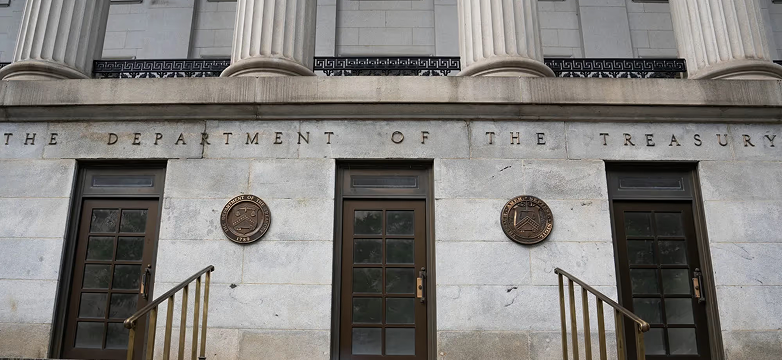The benefits of clean energy tax credits

Commentary by Crux Advisor Itai Grinberg
Itai Grinberg is a professor of law at Georgetown University whose research focuses on international tax policy, as well as the intersection of international tax law, international trade law, international investment law, and international financial regulation, and the relationship between taxation and climate policies. Previously, Mr. Grinberg was the Deputy Assistant Secretary (Multilateral Negotiations) in the Office of Tax Policy of the United States Department of the Treasury. He was the lead US negotiator for the global corporate minimum tax endorsed by the Leaders of the G20 at their Rome Summit meeting in 2021 and led US efforts at the OECD’s Inclusive Forum on Carbon Mitigation Approaches. He worked closely with Secretary Janet Yellen on international tax matters, regarding tax issues with G7 and G20 counterparts, and was the lead delegate for the United States on international tax issues across all multilateral institutions.
The market for clean energy tax credits is growing more quickly than expected, directing billions of dollars to new projects, domestic manufacturers, and rural and low-income communities in 2023. Corporate taxpayers are beginning to explore this market in earnest. Crux’s recent market intelligence report estimated $7-$9 billion in tax credit transfers in 2023. The Financial Times similarly reports an “avalanche” of interest in corporate transfer deals.
And this is just the beginning. Projections suggest that in future years the transferable credit market may exceed $80 billion per year. This represents the largest investment in reducing carbon emissions in American history. From a corporate perspective, that means transferable tax credits represent a great opportunity to satisfy a firm’s tax liability, at a discount to face value, and support clean energy development and reduce greenhouse gas emissions at the same time.
A common question: What’s the catch?
Transferable Clean Energy Tax Credits almost sound like too much of a win-win proposition. So when Crux speaks with tax directors and CFOs about the market for clean energy tax credits, they instinctively ask about the risks. And yes, there are inherent risks of which any firm purchasing tax credits should be well-apprised. But the risks can be managed. And to understand the opportunity that transferable tax credits offer, companies must also get a handle on what this market has to offer: the chance to lead on tax management, sustainability strategy, and good corporate governance.

Get our latest insights and favorite reads on the transferable tax credit market in your inbox.
Intro to transferability
The IRA principally works by offering clean energy projects and manufacturers the opportunity to claim transferable tax credits. Congress revolutionized the scope and breadth of such credits, which are now available to more projects than ever before and in place for up to 10 years. To allow the private sector to realize the full value of these credits, developers can now transfer, or sell, their tax credits to a third-party for cash. Though a form of transferability also exists in certain state tax credits, those credit programs are at least an order of magnitude smaller than the new IRA credit regime. Moreover, true transferability had not existed at the federal level until now.
The value of transferable tax credits
Companies can manage income taxes by investing in transferable tax credits
For years, US businesses have encouraged policymakers to find solutions that address the need for clean energy by leveraging innovation and the strength of American business. Incentive-driven approaches, like the IRA, focus on market-based mechanisms to drive down emissions.
In a report in December 2023, the White House estimated that investment in clean energy and domestic manufacturing since 2021 has topped a half a trillion dollars and is significantly outpacing market forecasts. The White House also maintains a database of investments in clean energy technology and manufacturing (figure 1), which illustrate the geographic and economic breadth of private sector investment supported by the IRA.
Figure 1. Map of clean energy, manufacturing, and other investments tracked by the White House


Much of this investment is driven through the tax code, and clean energy companies and manufacturers often seek to sell their tax credits to corporate taxpayers with current year tax liabilities. Corporations can buy these credits at a discount, satisfying their tax obligations and freeing up working capital at the same time. Analysis by Crux indicates that tax credits, on average, sell for between 90-95 cents on the dollar, depending on the size and type of the credit.
Companies can manage taxes while demonstrating good governance
Corporations must balance a range of stakeholder interests when preparing their tax strategies, including pressures to ensure that corporations manage tax liabilities responsibly. Considering the environmental and social impact of business, third party reviewers tend to emphasize the importance of good corporate citizenship and governance on tax issues.
Clean energy tax-preferred investments are typically regarded as being aligned with good governance principles. They represent a way to manage tax liability while leveraging a company’s tax burden to meet corporate sustainability or responsibility goals. Purchasing tax credits is not a tax maneuver, but rather a form of passive (and often low-risk) investment in, and endorsement of, domestic clean energy infrastructure. This investment supports not only reduced emissions, but also US competitiveness, national energy independence and national security, and the growth of a domestic clean energy manufacturing supply chain.
The benefits of transferable tax credits are broadly distributed and buying credits is an opportunity to demonstrate climate leadership
For most companies, it is not practical to make direct investments in clean energy. Besides being outside most companies’ expertise, direct investments expose their investors to risks that future policy changes might affect project economics. However, for investments in transferable tax credits, no money changes hands until the credits are generated, and credit value is not tied to project economics. This means that a project will generate tax credits only once it is placed into service or has produced eligible power, manufactured goods, or other qualifying activities.
States across the country are benefiting from these investments. An analysis by the Financial Times in August 2023 revealed that over $180 billion of investment was committed to districts represented by Republican members of Congress, compared to approximately $10 billion in districts represented by Democrats. Low-income and rural communities are also seeing disproportionate benefits from these new tax credits. In the first 30 days of the application window for the Low-Income Communities Bonus Credit Program, Treasury received more than 46,000 applications for new energy facilities to be located in low-income communities. As a result, Americans across the country are seeing jobs created by clean energy, decarbonization, and advanced manufacturing.
Shareholders strongly value contributions to environmental sustainability that simultaneously benefit the company’s bottom line. And meanwhile younger workers, regardless of their politics, consistently say that they generally want their employers to show leadership to address climate change. Indeed, among younger workers, more than half expect their employers to take more action to address climate change. So from a variety of perspectives – whether it be shareholder value, workforce retention, or public perception and reputation, purchasing tax credits is a good way to demonstrate a commitment to supporting clean energy infrastructure and solving important global problems.
The Crux platform
Tax credit deals on the Crux platform have driven tangible impacts in 2023. Credits sold through the Crux platform helped a South Carolina factory produce high quality solar inverters at lower costs – supporting hundreds of jobs. The Crux platform helped residential solar installers in low-income communities efficiently defray their costs by selling tax credits associated with solar arrays for hundreds of households — saving homeowners money on their utility bills. Companies used the Crux network to discover and ultimately purchase the tax credits associated with a new battery storage facility that will support grid resilience in Texas. And the list goes on.
Tax credit buyers in each transaction are able to use their tax liabilities to support these projects and share that support internally and externally, while avoiding taking on project risk or making illiquid project investments. These credit purchases have allowed buyers to manage their tax liabilities, and can free up millions of dollars in working capital.
Crux is the ecosystem to help buyers of tax credits and their advisors identify tax credits to purchase and manage their transactions. Our network and tools streamline transactions, provide access to a large, transparent market, reduce risk, and increase trust. Reach out today to get started exploring this new market.
Additional insights & news

April 4, 2025
This guide examines the differences between tax equity and transferable clean energy tax credits, including the rise of hybrid tax equity structures that utilize elements from both financing structures.
Read More
March 31, 2025
Advanced manufacturing tax credits are among the most in-demand in the tax credit market. Learn what you need to know about these popular credits in this guide.
Read More
March 26, 2025
Beginning in 2025, clean energy projects have access to the new §48E clean electricity investment tax credit and §45Y clean electricity production tax credit. Going forward, developers of new projects need to understand the details of the new tax credits, and tax credit buyers should understand the different qualification parameters under the tech-neutral tax credit regulations.
Read More





.jpg)






























































